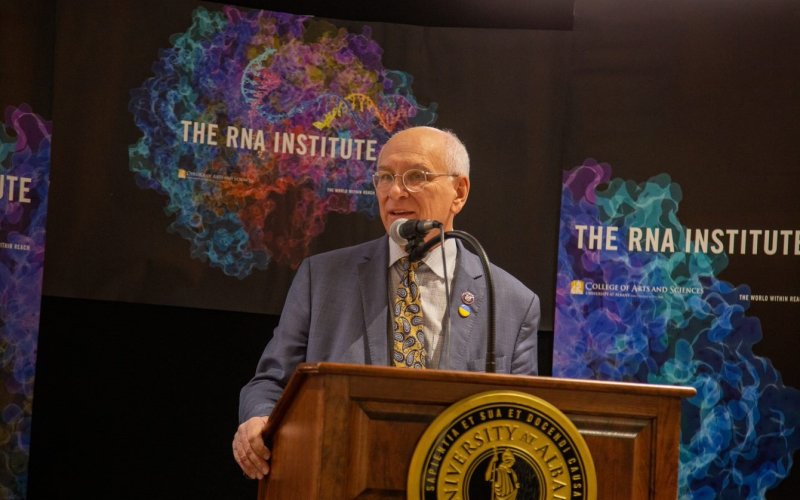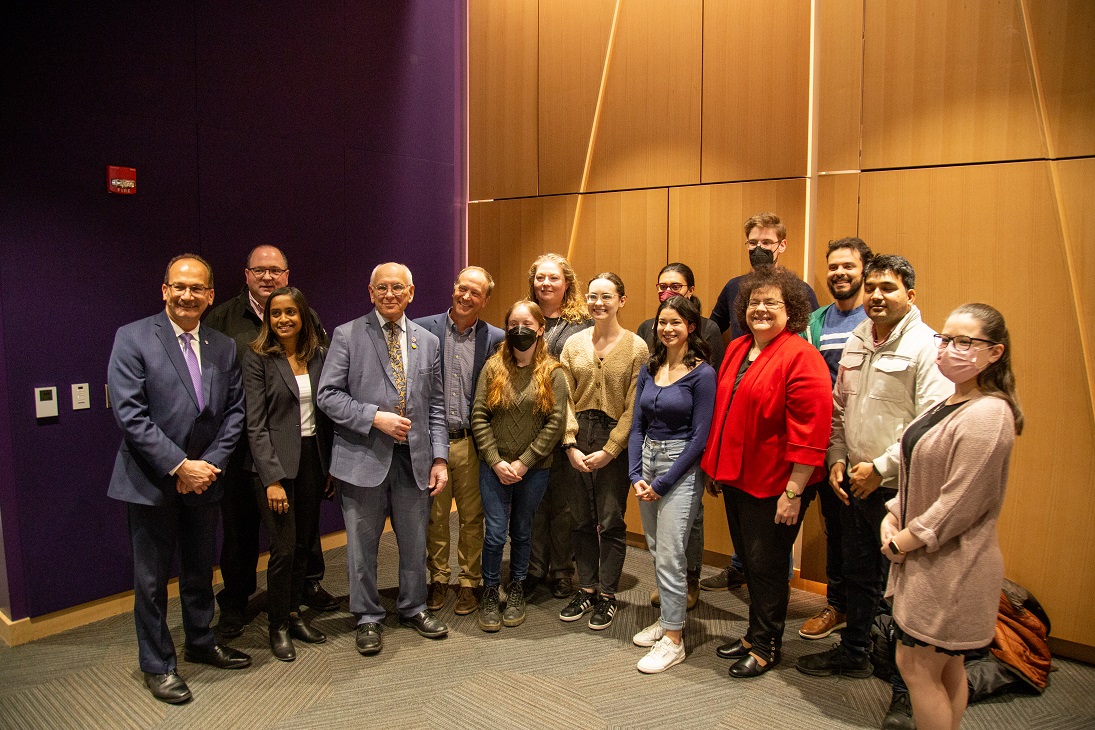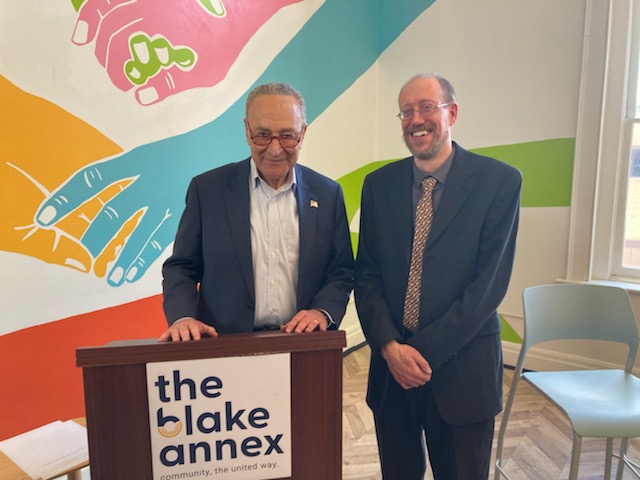UAlbany Research at The RNA Institute, NYS Mesonet Receives $2 Million Federal Boost

ALBANY, N.Y. (March 24, 2022) – Two of the University at Albany’s signature research areas are receiving nearly $2 million from the recently passed federal budget.
U.S. Rep. Paul Tonko announced yesterday that The RNA Institute at UAlbany will receive $1 million for its Next Generation RNA Technology Package, equipment that will help scientists at the Institute identify and track genetic changes in RNA diseases like COVID-19 and myotonic dystrophy.
Tonko’s announcement came two days after U.S. Sen. Chuck Schumer announced $900,000 in funding for an atmospheric profiler testbed that will rely on real-time data collected from New York State Mesonet sites operated by UAlbany.
“Federal investments in scientific research are critical to protecting our communities,” said University at Albany President Havidán Rodríguez. “These grants will help UAlbany researchers track and develop treatments for debilitating illnesses and improve forecasting and early warning for potentially life-threatening storms.”
“In the wake of the COVID-19 pandemic and with increasingly frequent extreme weather associated with climate change, this work has never been more vital. We’re grateful to Sen. Schumer and Rep. Tonko for their leadership, steadfast commitment to higher education and for recognizing and advocating for the importance of this research to all New Yorkers.”
Next Generation RNA Technology

Since its launch in the fall of 2020, UAlbany’s COVID-19 Surveillance Testing program has analyzed nearly 250,000 saliva samples for the virus. It is overseen by Andy Berglund, director of The RNA Institute, and managed by Tammy Reid, the Institute’s research and development manager, and John Cleary, an Institute collaborative staff scientist.
Funds from the Next Generation RNA Technology Package will be used to purchase new equipment to support The RNA Institute’s work with SUNY Upstate Medical College to sequence and analyze COVID-19 variant samples collected from SUNY campuses. Data from these samples will help to better understand the virus and develop response strategies for future variants or other viruses.
The funding will also help to purchase new equipment for other research initiatives at The RNA Institute, including its ongoing myotonic dystrophy (DM) research. Institute researchers are using sequencing technologies, microscopy and mass spectrometry to better understand the toxic RNA molecules that cause DM and develop therapeutic strategies.
“We thank Congressman Tonko and his staff for working tirelessly to secure this funding for The RNA Institute,” said Berglund. “While this money is an investment in the next generation of equipment, it will also help us to create new discoveries that may help with future pandemics and other health problems and, at the same time, develop the next generation of skilled workers that will help drive the economy of the Capital Region and New York State.”
The RNA Institute grant was among four projects totaling nearly $6.2 million highlighted Wednesday by Tonko at an event inside ETEC. Included was funding for a floating solar array on the city of Cohoes municipal reservoir, a project for which Richard Perez of UAlbany’s Atmospheric Sciences Research Center served as an early advisor.
The VERTEX Project

The atmospheric profiler testbed, titled the Empire State VERTEX (Vertical Sensing Evaluation Regional Testbed Experiment) program, will use Doppler LiDAR instrumentation at each of the NYS Mesonet’s 17 profiler sites located across the state to explore and better understand the boundary layers of the atmosphere.
Up until now, researchers at the National Weather Service have relied on weather balloons to measure these atmospheric layers twice a day at three locations across the state. The VERTEX program will take new measurements every five minutes, improving forecasting and early warning of severe weather events.
“This first-in-the-nation VERTEX network will act as a national testbed, with the new federal grant facilitating evaluation and integration of this technology into real-world applications, such as aviation, renewable energy and emergency management,” said Jerry Brotzge, program manager of the NYS Mesonet. “VERTEX profiling technology has the potential to significantly reduce aircraft delays, make wind energy more efficient, aid air pollution forecasts, and improve severe storm and winter weather warnings and predictions."
The VERTEX project was among $22 million in Capital Region projects announced Monday by Schumer at the Blake Annex in downtown Albany.




